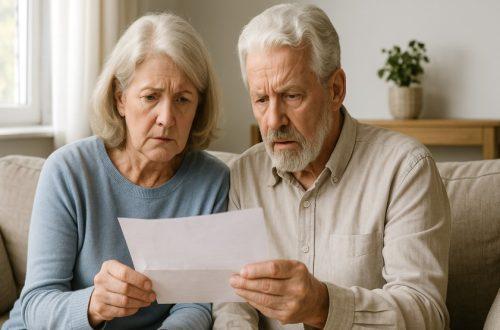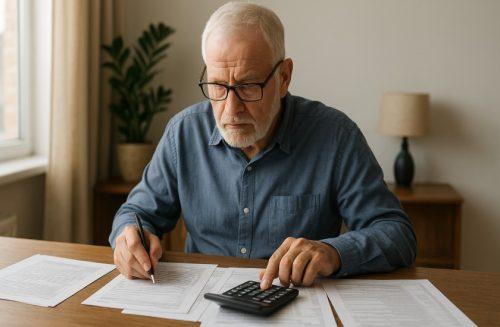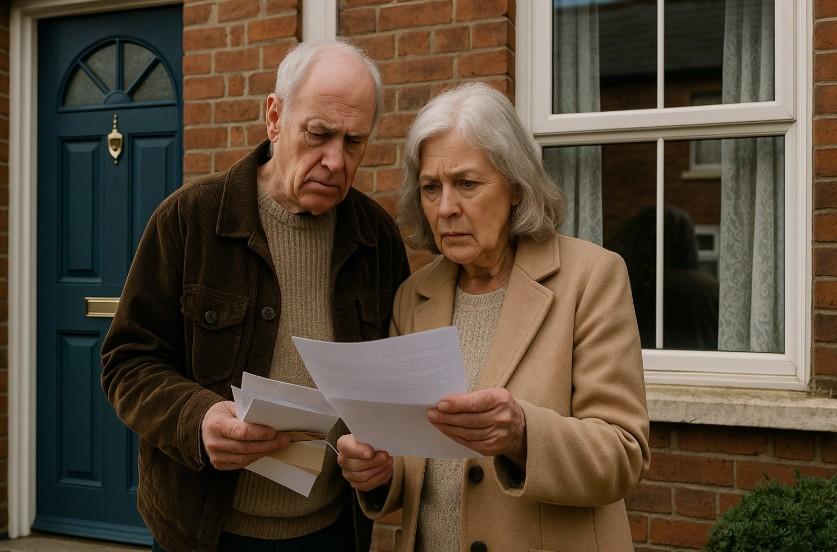|
Getting your Trinity Audio player ready...
|
Have you recently heard about the £300 deduction for UK pensioners and wondered what it really means for you? With news headlines and government letters circulating, there’s been confusion and concern, especially among older citizens relying on their pensions.
If you’re aged 66 or over, you may be affected by recent changes to the Winter Fuel Payment scheme, which is now linked to a new income cap. The government will no longer restrict the payment upfront based on income but instead plans to recover it later through tax if your income exceeds £35,000.
This guide is here to help you make sense of it all. You’ll learn how the deduction works, who’s affected, what repayment looks like, and how to avoid unexpected surprises. Let’s explore what the £300 deduction means, how it will be implemented, and what your options are if you’re concerned.
What Is the £300 Deduction for UK Pensioners?

The £300 deduction refers to a new policy change in how the UK government manages the Winter Fuel Payment for pensioners. This support payment is intended to help you with heating costs during the colder months.
However, if your income is above a certain threshold, the government now plans to reclaim the support amount through the tax system after it has been paid.
Rather than denying the payment upfront, everyone who qualifies by age will receive the Winter Fuel Payment automatically. The new change applies only to those with an annual income of more than £35,000.
If your income exceeds that amount, you will be required to pay the money back through your regular tax deductions.
Here’s what it includes:
- Winter Fuel Payments range from £200 to £300, depending on age
- The payment will still be deposited into your account as normal
- Income over £35,000 will trigger repayment via tax
- Repayment will be made either through PAYE or Self Assessment
This isn’t a cut to your pension, but a repayment of a benefit considered unnecessary for high-income pensioners. Around 2 million individuals are expected to be affected by the change. The change ensures that winter fuel support goes only to those who genuinely need financial help.
Who Will Be Affected by the £300 Deduction?
If you’re a UK pensioner, it’s important to understand whether this new policy impacts you directly. Not every pensioner will face a deduction. The government has introduced a £35,000 income cap, and only those with annual incomes above this threshold will be required to repay the Winter Fuel Payment.
Here’s a breakdown of who is affected:
- You will still receive the Winter Fuel Payment if you’re aged 66 or above
- If your total income exceeds £35,000, the payment will later be reclaimed through tax
- Pensioners earning below the income threshold will not need to repay anything
- Roughly 2 million pensioners fall into the affected group, according to HMRC estimates
The income includes all forms of pension income, investments, savings interest, rental income, and earnings. If you’re unsure about your total income, it may be worth checking with a tax advisor or using the HMRC calculator provided online.
This change aims to balance public spending by ensuring the fuel allowance supports those who genuinely need help with energy costs. It’s also a reversal from earlier plans to restrict the benefit only to those on Pension Credit. If you believe your income may cross the threshold, you can plan now for potential repayments starting in 2026.
How Will HMRC Recover the £300 Payment?

The government has made it clear that the £300 Winter Fuel Payment will not be withheld upfront, even if your income is above £35,000. Instead, HMRC will recover the payment through the tax system. If you’re affected, here’s how the deduction will take place based on your tax status:
Will the Money Be Taken Directly From Your Bank Account?
No, the government will not directly withdraw funds from your bank account for this repayment. While HMRC does have a power called Direct Recovery of Debts (DRD), it’s only used under strict conditions and is not applicable to Winter Fuel Payment recovery.
For DRD to apply, the debt must be over £1,000, with multiple ignored notices and no appeals in place. In fact, DRD has only been used 19 times between 2016 and 2018. Instead, the repayment will be managed through your tax code or tax return.
How Does PAYE Work for Pensioners?
If you receive a private or state pension through the Pay As You Earn (PAYE) system, HMRC will adjust your tax code. This means you’ll repay the Winter Fuel Payment in monthly instalments throughout the 2026 to 2027 tax year. For a typical £300 payment, you might repay about £25 per month. From 2027, two payments may be collected, raising monthly deductions to around £50.
What About Self Assessment Taxpayers?
If you complete a Self Assessment tax return, the payment will be added to your 2025 to 2026 return, due by January 2027. If you file on paper, the deadline is October 2026. HMRC will automatically calculate and include the payment if needed, though you should double-check your return to ensure accuracy.
When Will the £300 Be Deducted?
You won’t feel the financial impact of this change right away. The Winter Fuel Payment will still be deposited into your account in November 2025, regardless of your income. However, the repayment will start in the following tax year, which is April 2026 to April 2027.
Here’s what the timeline looks like:
- Winter Fuel Payments for the 2025–2026 winter will be paid as usual
- HMRC will reclaim the payment through PAYE or Self Assessment from April 2026
- For PAYE taxpayers, repayments will be spread monthly over the year
- Self Assessment taxpayers will pay through their 2025–2026 return
- In 2027, HMRC plans to collect two years’ worth of payments in a single year, potentially doubling deductions
This system is designed to ensure repayment is smooth and affordable. You will not need to take immediate action to repay, as HMRC will either adjust your tax code or update your Self Assessment obligations. The changes were introduced to streamline repayment and avoid large one-off deductions from pensioners.
Can You Opt Out of the Winter Fuel Payment?

Yes, if you believe your income will exceed the £35,000 threshold, you can choose to opt out of receiving the Winter Fuel Payment starting from April 2026. This may be a smart move if you’d prefer not to deal with the tax repayment later.
Here’s what you need to know:
- The option to opt out will open from 1 April 2026
- You’ll be able to opt out via the UK website or mygov.scot
- You can also opt out by phone or post using details from the Winter Fuel Payment Centre
- Opting out prevents repayment obligations later via tax
This option allows you to avoid adjustments to your tax code or larger Self Assessment bills. It’s especially useful if you want more control over your finances or expect your income to remain high in future tax years.
Keep in mind, the decision to opt out must be made before the payment is issued, not after. Make sure to review your income projections carefully before making a decision.
Will HMRC Take Money from Your Bank Account?
There has been a lot of concern due to headlines suggesting HMRC may take money directly from pensioners’ bank accounts. However, this is not the case for the £300 deduction. The Direct Recovery of Debts (DRD) process allows HMRC to recover money from bank accounts, but only under very limited circumstances.
Here’s what DRD involves:
- It’s used for debts over £1,000
- It only applies if you’ve ignored all previous contact attempts
- A face-to-face meeting must happen first
- A 30-day notice must be sent before any action
- At least £5,000 must remain in your accounts after deduction
DRD was only used 19 times between 2016 and 2018. So while HMRC has this power, it’s rarely used and will not apply to the Winter Fuel Payment.
The government’s method for recovering the £300 is solely through adjusting tax codes or adding it to Self Assessment returns. You won’t see HMRC taking the money directly from your bank account for this specific issue, despite the confusion caused by media reports.
How Much Will You Repay Each Month?

If you’re earning over the £35,000 threshold, repayment will be automatic and spread out to make it manageable. Whether through PAYE or Self Assessment, the government intends to avoid lump-sum deductions. For PAYE taxpayers, the amount is typically spread evenly over 12 months, depending on the size of the payment.
Here’s what you can expect:
- For a £200 Winter Fuel Payment, HMRC estimates £17 per month
- For a £300 payment, expect about £25 per month
- From 2027, this may double due to two years being collected at once
- After 2027, the repayment amount is expected to return to standard levels
Estimated Monthly Deductions Based on Payment Amount
| Winter Fuel Payment | Monthly Deduction (2026–2027) | Monthly Deduction (2027–2028) |
| £200 | £17 | £33 |
| £300 | £25 | £50 |
These figures are illustrative and may vary slightly depending on your exact tax code. For Self Assessment, the full amount is due with your tax return, but HMRC offers online tools to help you calculate the impact in advance.
What Should You Do If You’re Affected?

If you believe the £300 deduction might apply to you, it’s important to prepare ahead of time. You don’t need to panic, but taking a few proactive steps now can help you avoid surprises later.
Here are the steps you should consider:
- Check your income for the 2025–2026 year to see if it exceeds £35,000
- Review your tax code and ensure your PAYE details are up to date
- If you use Self Assessment, plan for the additional amount on your 2026 return
- Use the HMRC calculator to determine repayment responsibilities
- Decide whether you want to opt out from April 2026
- Stay informed by checking official UK guidance and updates
HMRC has published clear instructions and a repayment calculator on its website. If you’re unsure, you can speak to a tax advisor or contact the Winter Fuel Payment Centre for support.
Understanding your eligibility, repayment method, and timing will help you stay in control. You don’t need to return the payment yourself, it will be handled automatically based on your tax information.
Conclusion
The £300 deduction for UK pensioners is part of a broader government effort to ensure benefits go to those most in need. If your income is above the £35,000 threshold, the Winter Fuel Payment you receive will still arrive as usual, but you’ll be expected to repay it through tax. Understanding how the process works, from PAYE adjustments to Self Assessment changes, helps you plan effectively.
There is no need to worry about your bank account being raided. HMRC has committed to fair and structured repayment methods, with options to opt out if needed.
As the cost of living remains a concern, these changes aim to balance support with responsibility. Stay informed, assess your eligibility, and take steps now to avoid surprises. With the right knowledge, you can handle this change smoothly and confidently.
FAQs
What is the £300 deduction for UK pensioners?
It refers to reclaiming Winter Fuel Payments from pensioners earning over £35,000 via tax.
Will HMRC take money directly from my bank account?
No, the money will not be taken directly from your account. Repayments are through PAYE or Self Assessment.
Who qualifies for the Winter Fuel Payment?
Anyone aged 66 and over during the qualifying week, regardless of income, initially qualifies.
Can I avoid the repayment?
Yes, from April 2026, you can opt out of receiving the payment if your income exceeds the threshold.
What is Direct Recovery of Debts (DRD)?
It’s a rarely used HMRC power to recover debts from bank accounts, not applicable here.
When will repayments begin?
Repayments start in April 2026 for the 2025–2026 Winter Fuel Payment.
How much will I repay monthly?
Expect around £25 per month for a £300 payment, or up to £50 in 2027 due to dual collection.








